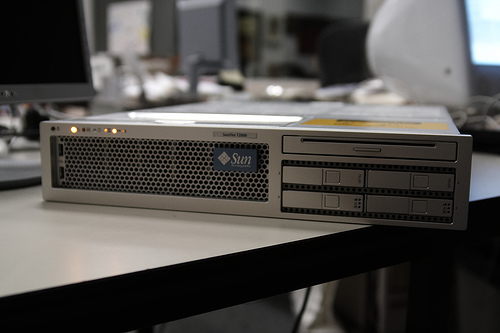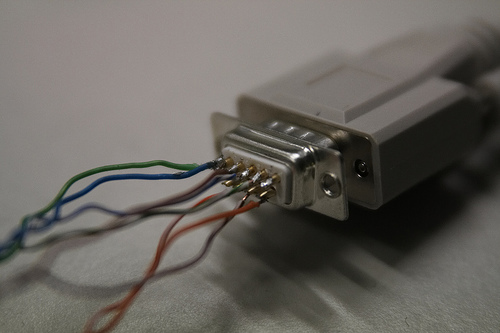So Sun has been doing this 'Try-and-Buy' thing with their new T1-based Sun Fire T2000 server. Which means that you get to try for two months, a machine with up to an 8-core UltraSPARC T1, 16G of RAM and 2 73GB harddrives, for free.
A dead frog could have known I'd go out and get one.
I figured I wouldn't max it out-- I'd get the 8GB version with 8 cores. First application was denied, but the second went through amazingly quickly. I've heard about people having to wait weeks. It took about two days for the application to be accepted, and three more for delivery. I was definitely impressed at the speed of that.
So anyway, it came:

Pretty, isn't it? I think it rivals Apple's Xserve. The inside is clean as a clean thing, too. No picture of that, unfortunately, but again it rivals Apple's Xserve.
Of course I had to try it out as soon as I had the chance. It came very well-wrapped. The unwrapping process took about 10 minutes, I think. Great care was given to even the simplest of parts. For instance, the two power cords (the thing has redundant powersupplies) came in two separate boxes, packed together in another box, shipped separately from the server itself.
Then the time came to plug it in. That's where the trouble started: the machine doesn't do any video-output at all. I know it's not really necessary for a server box to have the latest and greatest in video acceleration hardware, but a most servers come with a MACH64 of some kind onboard so you can at least get up a text console without hassle. Not the Sun-- it requires that you have a computer available with a serial connection. That's all fine with me, I have such stuff anyway. But the serial connection for this uses an RJ-45 connector instead of the standard DB-9 one. And the only adapter I had for that didn't seem to be the right one. Luckily I was able to fabricate my own:

Tip to Sun: for just that extra bit of customer satisfaction, send along this sort of adapter.
Once I had that going, setting up was a breeze. Solaris 10 came preinstalled, so all I had to do was answer some questions about the setup through the insanely slow serial connection (maybe I should have set up the network management before booting...) and it was up and running. Loudly, I might add. It makes more noise than a redundant array of vaccuum cleaners.
I'll be running some benches on it, notably in serving anyMeta pages and doing database serving. Maybe I'll try to get Linux going on it. It'll also be interesting to see what the 2.5" 10K rpm drives can do, speed-wise.